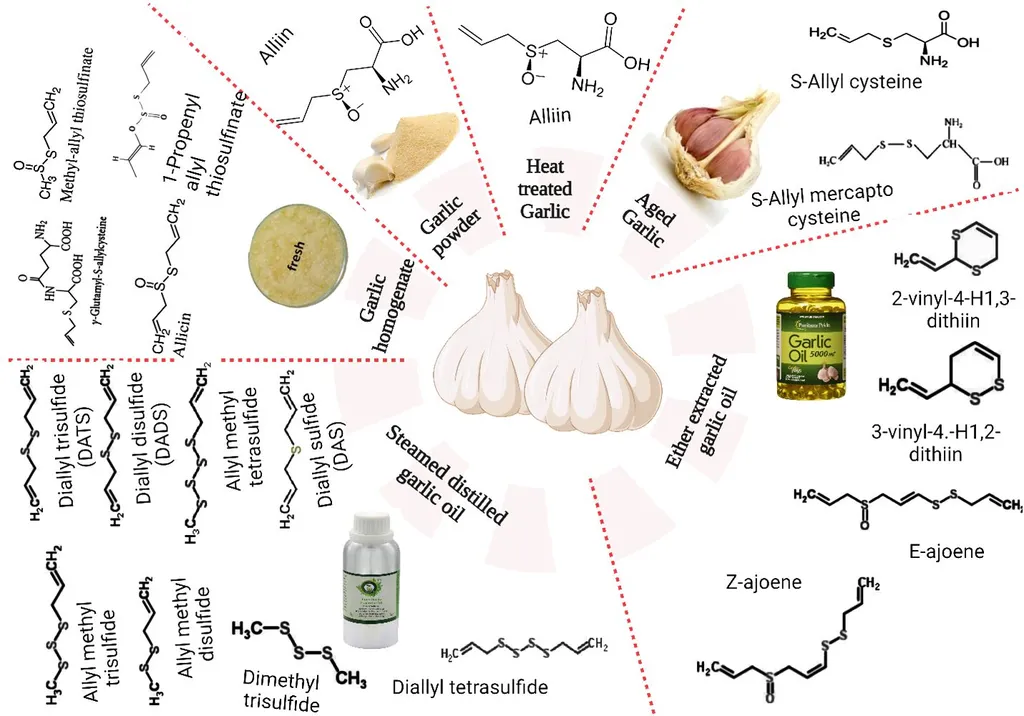In the ever-evolving landscape of agricultural science, a recent discovery from the University of Huelva, Spain, is set to stir the pot—quite literally. Researchers, led by Alberto Galisteo from the Department of Chemistry, have identified four new bioactive compounds, dubbed Garlicinals A–D, in the hydrolate of Allium sativum L., more commonly known as garlic. Published in the esteemed journal ACS Omega, this finding could have significant implications for the agriculture sector, particularly in the realm of natural pesticides and bio-based products.
Garlic, a staple in culinary arts worldwide, has long been recognized for its medicinal properties. However, the discovery of these novel organosulfur α,β-unsaturated aldehydes opens up new avenues for exploration. These compounds, derived from the hydrolate—a byproduct of the steam distillation process used to extract garlic oil—exhibit bioactive properties that could be harnessed for various applications.
“Garlicinals A–D represent a promising frontier in the development of natural, eco-friendly agricultural solutions,” Galisteo remarked. The compounds’ bioactive nature suggests potential uses in pest management, plant growth regulation, and even as natural preservatives. This could be a game-changer for farmers seeking sustainable alternatives to synthetic chemicals, which have been under scrutiny for their environmental impact.
The commercial implications are substantial. The global market for bio-based pesticides is burgeoning, driven by increasing consumer demand for organic produce and stricter regulatory frameworks around synthetic pesticides. Garlicinals A–D could become key ingredients in new formulations, offering farmers effective, natural tools to protect their crops. Moreover, the utilization of hydrolate, a typically discarded byproduct, adds an economic dimension to the discovery. By repurposing this waste stream, producers could enhance the profitability of garlic processing operations.
Beyond pest management, the compounds’ bioactive properties could also find applications in the food preservation industry. As consumers increasingly seek out natural preservatives, Garlicinals A–D could offer a viable alternative to synthetic additives, further boosting their commercial potential.
The research, published in ACS Omega and led by Alberto Galisteo from the University of Huelva, underscores the importance of continued investment in agricultural science. As the world grapples with the challenges of sustainable food production, such discoveries pave the way for innovative, eco-friendly solutions. The future of agriculture lies in harnessing the power of natural compounds, and Garlicinals A–D are a testament to this promising trend.
In the words of Galisteo, “This discovery is just the beginning. The potential applications of these compounds are vast, and we are excited to explore their full range of benefits.” As research progresses, the agricultural sector can look forward to a new era of natural, effective, and sustainable solutions, driven by the humble yet mighty garlic.

